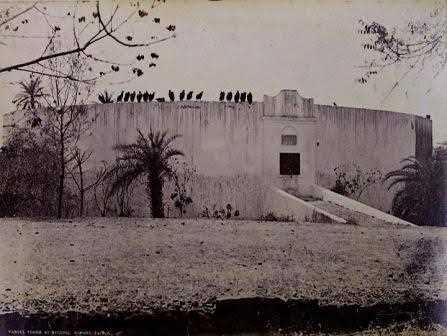A dakhma, often referred to as a Tower of Silence, is a circular, elevated structure created by Zoroastrians for excarnation (the exposure of human corpses to the elements for decomposition), which prevents the pollution of the soil and other natural elements by the dead bodies. The flesh is eaten by carrion birds, most frequently vultures and other scavengers. The skeletal remains are gathered in a central pit, where they continue to deteriorate and weather.

The squat structures are now found in or close to population centres, but are set apart from the urban bustle by gardens or forests due to the rapid urbanisation of Indian cities. In the Parsi Zoroastrian tradition, exposing the dead is also seen as a person's last deed of kindness because it gives the birds access to what would otherwise be wasted.
The use of the Towers of Silence is a hotly contested topic within the Parsi community. The anjumans, the primarily conservative local Zoroastrian organisations, typically oversee the facilities. These typically have a nine-member board with five priests on them. These associations usually forbid use by the children of 'mixed marriages,' that is, where one parent is a Parsi and the other is not, because these groups have domestic power over trust properties and have the right to grant or restrict access and use in accordance with Indian statutes. Even though outsiders are not allowed inside, the towers are nonetheless revered by the Parsi community. Visitors are shown a replica of a tower in Mumbai. You can visit the location on organised trips.
The construction of the towers is standard.
The tower's roof is divided into three concentric circles and is lower in the centre than the exterior. The dead are arranged on stone beds on the tower's roof, and a central pit serves as an ossuary into which the bodies fall after being devoured by vultures. The bodies decompose naturally with the aid of lime, and the remainder is washed away by rainwater through several coal and sand filters before reaching the sea.